Alsace – Land of castles (FR)

FORTE CULTURA travel recommendation
Alsace
Start your journey of discovery through a medieval and mysterious Alsace!
Alsace was once the cradle of several imperial dynasties, including the Hohenstaufen and Habsburg dynasties. They built numerous castles in the Middle Ages to protect their lands and wealth. Today, almost 80 castles and castle ruins remain, visible from afar, in the middle of forests and next to vineyards.
The Route of the Castles and Fortified Towns in Alsace includes more than 30 sites. Explore fascinating history in Alsace from north to south, for example: Wissembourg, Fleckenstein, Wasenbourg, Lichtenberg, La Petite Pierre, Haut-Koenigsbourg and many more.
Admire wild and romantic castle ruins, charming historic towns and fantastic views. Meet the people who bring this cultural heritage to life every day. Immerse yourself in the history of Alsace and let yourself be carried away by the magic of these places steeped in history.
An unforgettable adventure awaits you!
Our FORTE CULTURA travel recommendation
The Route of the Castles and Fortified Towns of Alsace
Developed by FORTE CULTURE Partner Alsace Destination Tourisme (ADT).
Wenn du dies siehst, nachdem deine Seite vollständig geladen wurde, fehlen leafletJS-Dateien.
1 Château du Haut-Andlau

The castle with its two characteristic towers dominates the Kirneck valley with Barr to the North and the Andlau valley to the South. The high castle which has no courtyard was built by the lords of Andlau between 1337 and 1344. The entrance consisting of a succession of defences against the enemy. The lords’ dwelling continued to be inhabited by forest wardens until 1796.
67140 Andlau
www.chateaudandlau.com
(Image ©C. FLEITH - ADT)
2 Château du Spesbourg
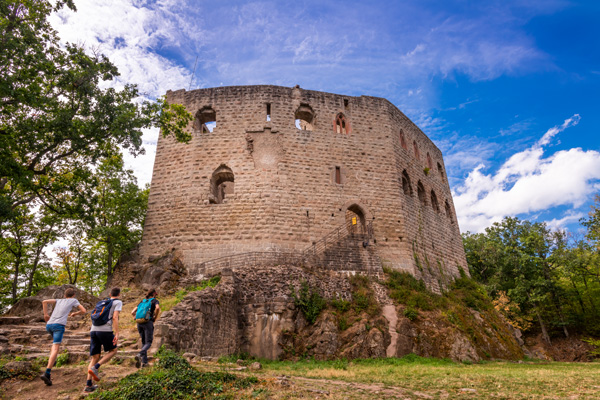
Built in 1247, the castle controlled the valley and the neighbouring abbey. It has a large square tower, 24 metres high, and a courtyard. On one of the arches of the ruin, you can see fragments of multicoloured frescoes – with the carved gables of the chimneys, they show a refinement that was rare in the 14th century. It has been restored over the last 20 years, making it more accessible.
67140 Andlau
www.chateauxfortsalsace.com
(Image ©INFRA - ADT)
3 Le château de Bilstein-Aubure
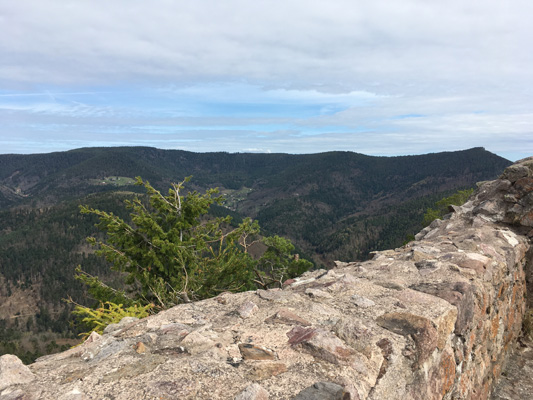
This castle features a 12th century square-shaped keep, protected by a double curtain wall modified by the Wurtembergs in the 14th century. The keep is accessed through a high pointed-arch door.
68150 Aubure
(Image ©A. Rinckenbach)
4 Château du Schoeneck
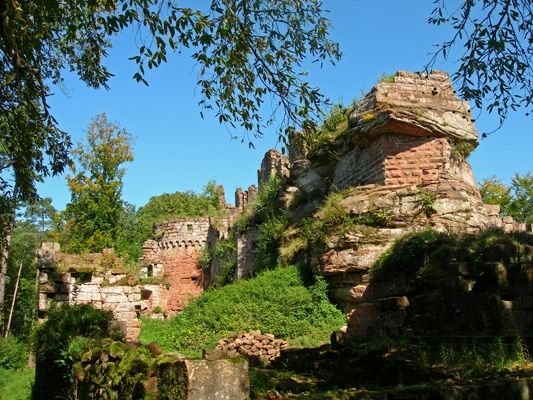
The Château, built around 1200 and restored in the 16th and 17th centuries, retains remnants of the 13th-century lodgings and a pentagonal keep. The entrance, dating from the 16th century, is protected by two artillery bastions and leads to the lower courtyard. Visitors can also view the west tower, also from the 16th century. For over 20 years, the association Cun Ulmer Grün has been dedicated to the preservation, security, and consolidation of the Château du Schoeneck. It collaborates with the curator of the Archaeology House in Niederbronn-les-Bains, where artifacts uncovered during excavations are displayed. Guided tours of the château are offered in season.
67110 Dambach
chateau.schoeneck.free.fr
(Image ©INFRA - ADT)
5 Château du Bernstein

This granite castle is one of the oldest in Alsace, know as early as the beginning of the XIth century. The castle has an 18 m high keep, a hexagonal lords’ dwelling with loopholes and semi-circular windows and a square tower used to contain the castle chapel.
67650 Dambach la Ville
www.chateauxfortsalsace.com
(Image ©ADT-E.List)
6 Châteaux du Haut-Eguisheim

The three towers perched on the Schlossberg hill at 591 m altitude overlook the Alsace plain. Built between the 11th and 12th centuries, they include the Wahlenbourg, the oldest, with its manor house, owned by Count Hugues IV of Eguisheim. Next is the Dagsbourg, located to the north, and finally the Weckmund, constructed in the 12th century. Today, only these three pink sandstone towers remain, remnants of a once unique castle abandoned from the 15th century onward. The ruins offer a view of Eguisheim, one of the most beautiful villages in France. From mid-November to mid-March, access is only on foot.
68420 Eguisheim
www.tourisme-eguisheim-rouffach.com
(Image ©M. Schampion - ADT)
7 Château de Ferrette

The Ferrette castle is one of the oldest in Alsace, first mentioned in 1105. It was one of the main possessions of the counts of Ferrette, who emerged from the division of the inheritance of the counts of Montbéliard. After the death of the last count, the county passed to the House of Austria in 1324 through the marriage of Jeanne de Ferrette to Duke Albert II of Habsburg, making the castle the residence of an Austrian bailiff. The ruins are divided into two parts: the upper castle, featuring a limestone habitation tower and a platform offering a panoramic view of the Vosges, and the lower castle, which includes several round towers equipped with gun ports.
68480 Ferrette
www.sundgau-sudalsace.fr
(Image ©INFRA - ADT)
8 Château du Hugstein

The Hugstein fortress is the only medieval military remnant of this size in the Guebwiller district. Built on a rocky hill, it overlooks Buhl and Guebwiller. Constructed in 1227 at the initiative of Hugo of Rothenburg, abbot of Murbach, it served as the main defensive site of the abbey principality. The castle also functioned as a prison for treacherous knights in the 13th century. The most famous resident, Abbot Barthélemy d'Andlau, who is believed to have built the gate tower and additional walls, was renowned for his scholarship and strict administration.
68500 Guebwiller
chateauxforts-alsace
(Image ©Pictural - ADT)
9 Château de Grand Geroldseck

Ruins of mediaeval castles, the Large and Small Geroldseck are thought to date from the 12th century. They can be reached from the Haut-Barr Castle by a hiking trail.
67700 Haegen
progeroldseck.free.fr
(Image ©INFRA - ADT)
10 Château de Petit Geroldseck
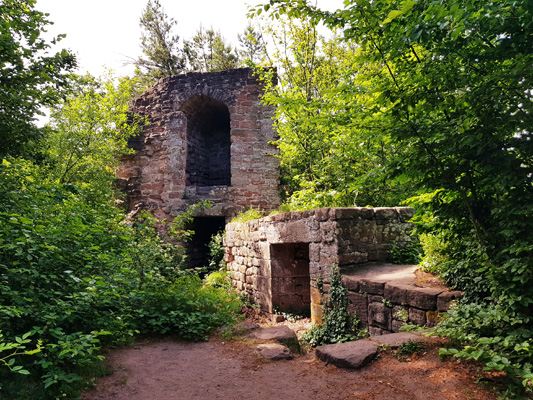
Probably built in the mid-13th century by the lords of Geroldseck, the small Geroldseck was a fief of the diocese of Metz, under the lordship of Marmoutier. Mentioned as early as 1235 with the reference to "two lands of Gerolsec," it is referred to as the new Geroldseck in the first half of the 14th century. The castle seems to have been abandoned quite early, likely by the 15th century, which contributed to its rapid degradation. Today, its remains offer a fascinating glimpse into the medieval history of the region.
67700 Haegen
progeroldseck.free.fr
(Image ©Office de Tourisme & du Commerce du Pays de Saverne)
11 Château du Landsberg

The castle was built between 1197 and 1200 by Conrad of Landsberg to protect the Abbeys of Hohenbourg, Niedermunster and Andlau, and to serve as a refuge in case of danger at Niedernai Castle. The fine Romanesque gemel windows of the palace and the oriel window in the castle chapel, give the whole a great elegance. The castle is thought to have been destroyed by the Swedes in 1632.
67140 Heiligenstein
www.chateauxfortsalsace.com
(Image ©INFRA - ADT)
12 Le château du Wineck
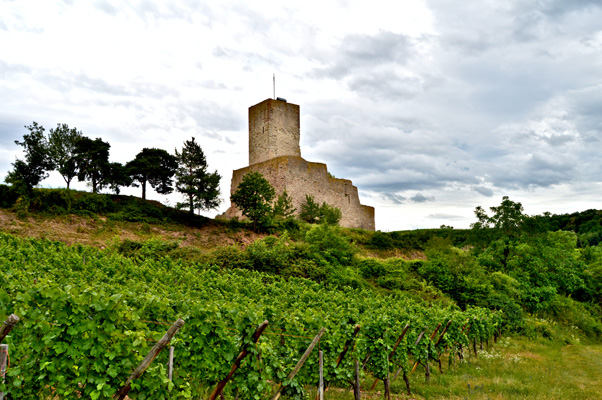
Perched above Katzenthal, the Wineck castle, built around 1200, stands at an altitude of 330 meters, nicknamed "the vineyard castle" due to the surrounding vineyards. This fortress features a 20-meter keep and houses a small museum. From this site, you can admire part of the Alsace wine route and the typical villages. The Wineck can be explored with family through a fun trail in the valley of cats, complete with puzzles to solve. A picnic area offers a delightful break.
68230 Katzenthal
www.kaysersberg.com
(Image ©OTVKB)

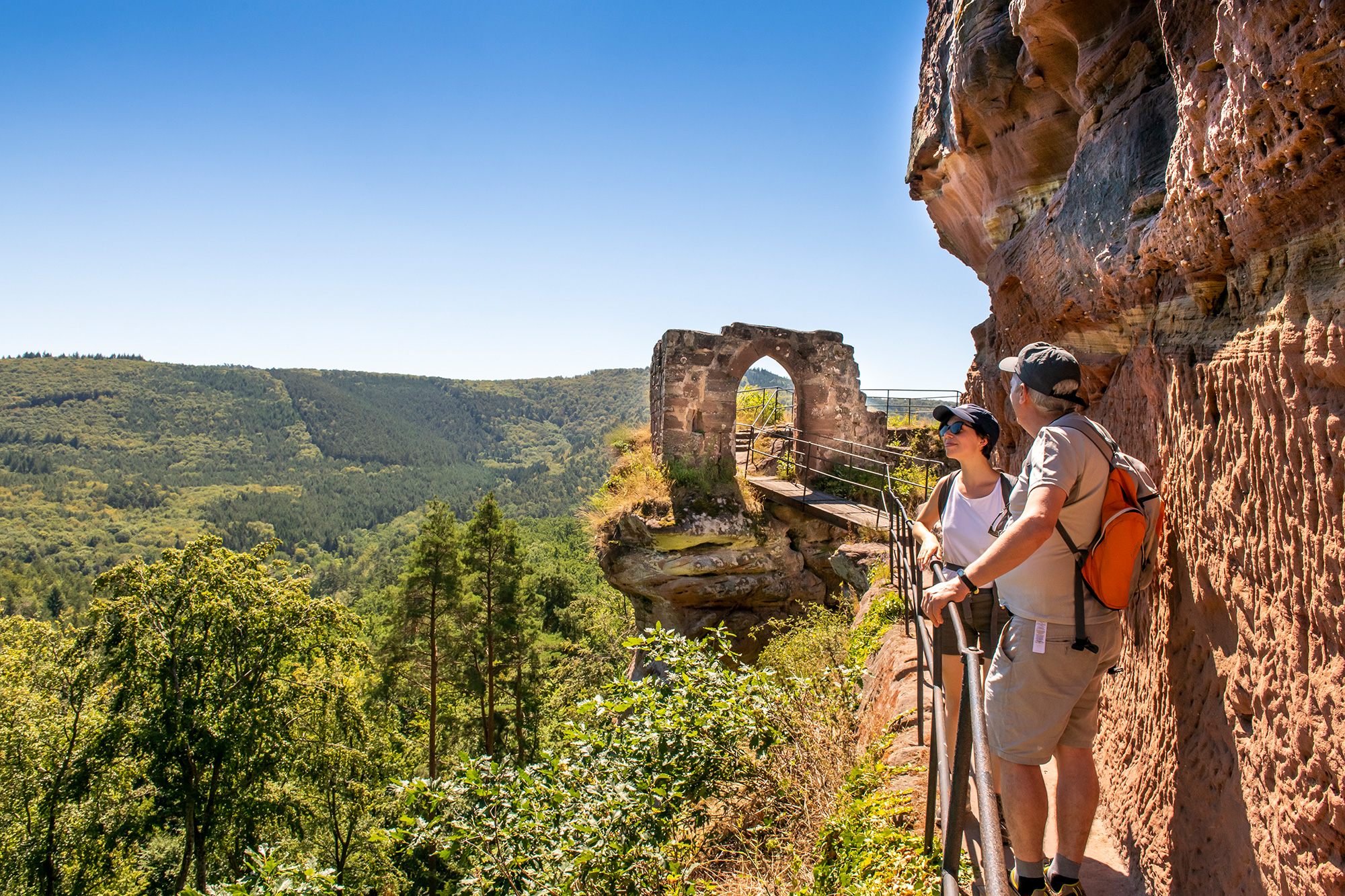
Schreibe einen Kommentar